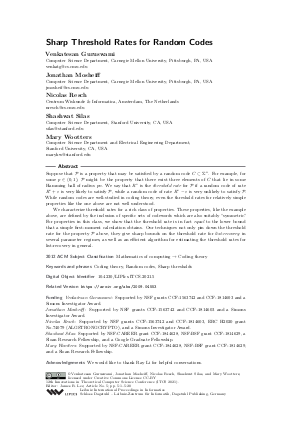LIPIcs.ITCS.2021.5.pdf
- Filesize: 0.53 MB
- 20 pages

 Creative Commons Attribution 3.0 Unported license
Creative Commons Attribution 3.0 Unported license











Feedback for Dagstuhl Publishing